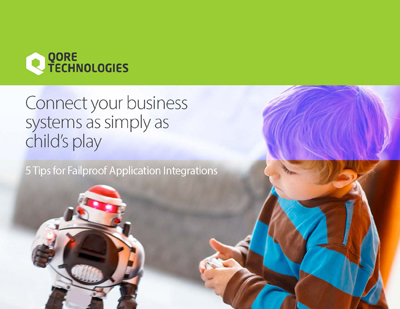How to recognize when Vintage Tech Loses Its Value.
While most people would treasure vintage items like clothing, records or furniture, vintage systems (or legacy systems, to use the more technological term) don’t hold the same value.
Business needs move quickly, and without the power to keep up, legacy solutions simply don’t cut it. Your business needs efficient, up-to-date integration solutions that can help you grow operational efficiency and outpace your competitors.
True, it does take time, effort and capital to upgrade your systems. However, that investment could save you an incredible amount of time and money in the long run. How do you know if you’re running legacy systems? According to Techopedia.com, a legacy system “…refers to outdated computer systems, programming languages or application software that are used instead of available upgraded versions.” In addition the definition states, “A legacy system may be problematic, due to compatibility issues, obsoletion or lack of security support.”
Do you have legacy issues lurking in your business? It’s time to conduct a little investigation. Put on your detective hat, and consider the following five aspects:
1. Your solution requires extensive training and / or special skills.
If your legacy integration solution is difficult to learn and use, it could be slowing your IT team down. Becoming an expert on legacy systems could take years, meaning there are likely only a few individuals or teams who can aptly manage your current solution. Additionally, your IT team likely doesn’t have the time to dedicate to training new employees.
Outdated solutions can significantly slow down your operations. If new employees struggle to use your system efficiently, training may not be enough—or may simply take too many resources.
2. Your solution fails to perform as Expected.
One clear sign it’s time to move to a better integration solution is if your current solution fails to perform as it should. Are you dealing with slow speeds, failures or glitches? Is your team constantly complaining about it? You likely have one of two problems: 1) it’s a poor quality solution or 2) it’s simply outdated and should be replaced.
If your staff and customers are counting on systems to integrate as they should, it’s unlikely they’ll have a lot of patience for constant errors. This could lead to frustration for your internal teams and for your paying clients.
3. The solution no longer solves your problems.
When you first invested in your integration solution, it may have seemed like a good fit. Actually, it may have been a great fit at the time. But integration solutions evolve and so does your business. Your legacy solution may have even become a liability. If your solution no longer solves your business problems in the way that you wish, it’s time to move on.
4. It’s difficult to add new connections / functionality.
Is your current solution flexible and adaptable enough to meet your changing needs? If it’s difficult to add new integrations, connections or functionality using your current integration platform or solution, it’s not scalable enough to truly fit your needs. Whether you’re simply relying on an outdated technology stack or an overcomplicated system, if you can’t add new functionality on top easily, you’re wasting your IT team’s precious time with custom coding that no one wants to spend time on.
5. Your operating costs are too high.
If you continue to spend money and time on implementation, writing code, training staff and other resource-heavy activities, you’re looking at a lot of costs (some you may not have even considered!) As well as the numbers that obviously impact your bottom line, negative impacts to employee and customer satisfaction and your brand’s reputation could also be quite costly.
In addition, you could be facing lost opportunity costs if your legacy systems continue to fail and your competitors create a better product or service because you can’t keep up with market innovation. A newer, more agile system can help you get ahead.
When It’s Time to Modernize
There are many risks to trusting a legacy integration solution, and if you’ve seen some (or all) of the signs above, it could be time to modernize. But keep in mind that you’ll need a solid implementation strategy, a solution that fits all of your business needs and an implementation expert to help guide you during the process.
Reduce Integration Headaches with Qore
Qore Technologies provides a comprehensive automation and IT/OT integration solution that’s designed for maximum flexibility with minimum investment. With Qore Transaction-Sure Automation, you’ll discover the benefits of error-free integrations designed to move your business forward.
Contact us today for your free consultation.


